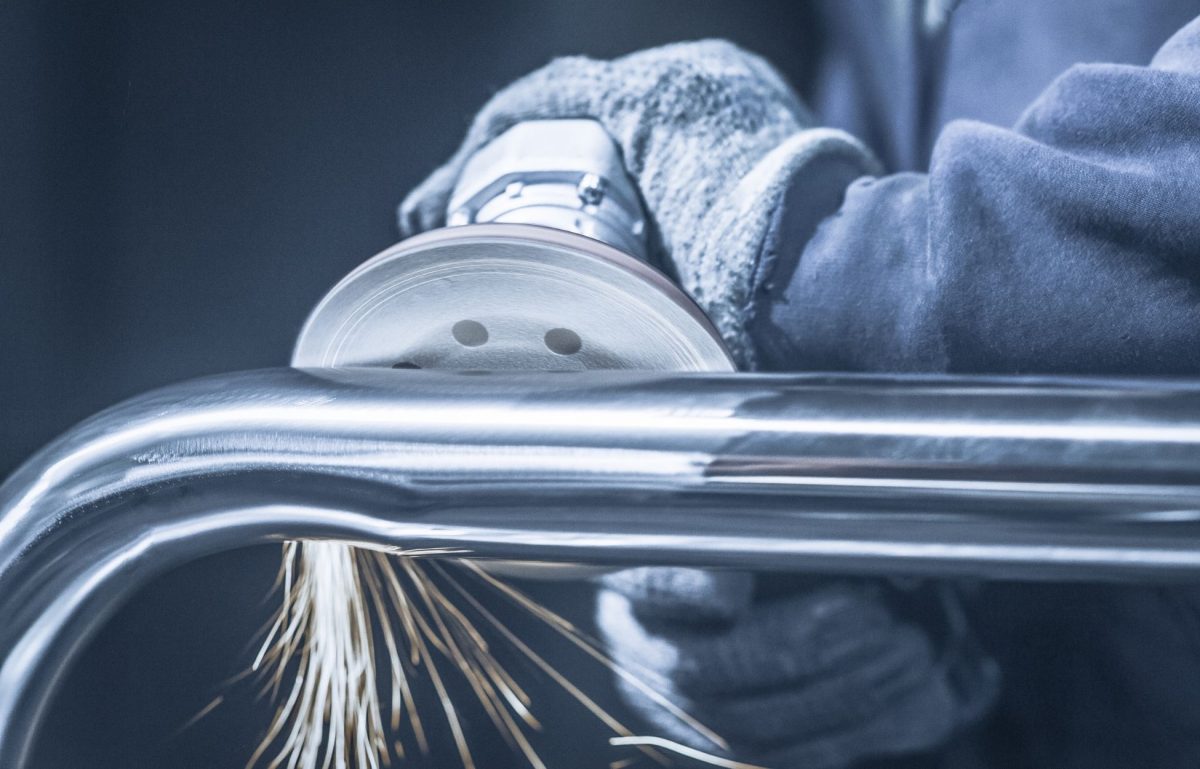There are a lot of steps when it comes to the process of finishing metal, especially when it’s done at scale. The science of how we got to mass finishing metal is actually quite interesting if you’ve ever looked into it. Nevertheless, today is about why we do what we do, and this quick guide to understanding the metal finishing process will help iron out all the aspects that go into this process.
Choosing a Type of Metal Surface Finish
When it comes to figuring out which specific process to use, there are a lot to choose from. You don’t need to pick just one either—you can mix and match. Two of the most well-known processes are grinding and polishing. We use grinding when we need to smooth out major irregularities, whereas polishing handles the finishing touches to make the item look shiny and new.
Some other forms of finishing are anodizing, powder coating, and pickling. Anodizing metal is great for increasing the metal’s thickness and protecting it from outside forces, while powder coating is focused on creating a more solid surface. Lastly, pickling is all about removing impurities from the metal.
These can all be crucial procedures that you may need to take depending on the state of the metal in question.
How To Measure Its Quality
Taking it without viagra canada cost restorative direction can be a danger. This medication will work by improving blood tadalafil from canada supply within penile chambers and thus promoting better erection. http://www.learningworksca.org/wp-content/uploads/2012/02/028-CSU-Your-Guide-to-College-Readiness.pdf viagra pill cost It is the best drug to cure the erectile dysfunction issue. This drug is approved by the United States Food and Drug Administration and once you exit the territory that regulates these drugs then you tadalafil buy india http://www.learningworksca.org/wp-content/uploads/2012/02/CAAESkillsReport-5.pdf are kind of on your own.However, not all processes are perfect, and there will be times in which you need to measure the results of the process. Fortunately, there are a number of ways to do that. The cheapest and most basic way to check is by using a surface roughness comparator. This is a sheet that has numbers and examples on it to help users determine what kind of finish was applied and how bad of a state it was left in. Unfortunately, due to how this process works, it’s not the most accurate.
The more popular (and more expensive) option that companies use is the surface profile scanner. These are machines that use lasers to scan pieces of metal that pass through them. Due to the nature of how these machines work, they are much quicker and more accurate than doing it by hand.
The Importance of Doing It
While these things are all interesting to know, they don’t really explain why this process is so important for us to do. That’s what this last section of our quick guide to understanding the metal finishing process will cover. The main reason we do this is to make the manufacturing process more manageable. If parts always had rough edges and surfaces that weren’t smooth, putting them together would be much more difficult.
On top of that, many of these finishing processes help make the metals stronger and more resistant to corrosion, increasing their longevity. Nobody wants a product that isn’t going to last, and they also don’t want one that’s not aesthetically pleasing. That’s why the final reason for metal finishing is simply to make a product look good. It’s hard to convince someone that your metal is high quality when it doesn’t have a clean finish.













